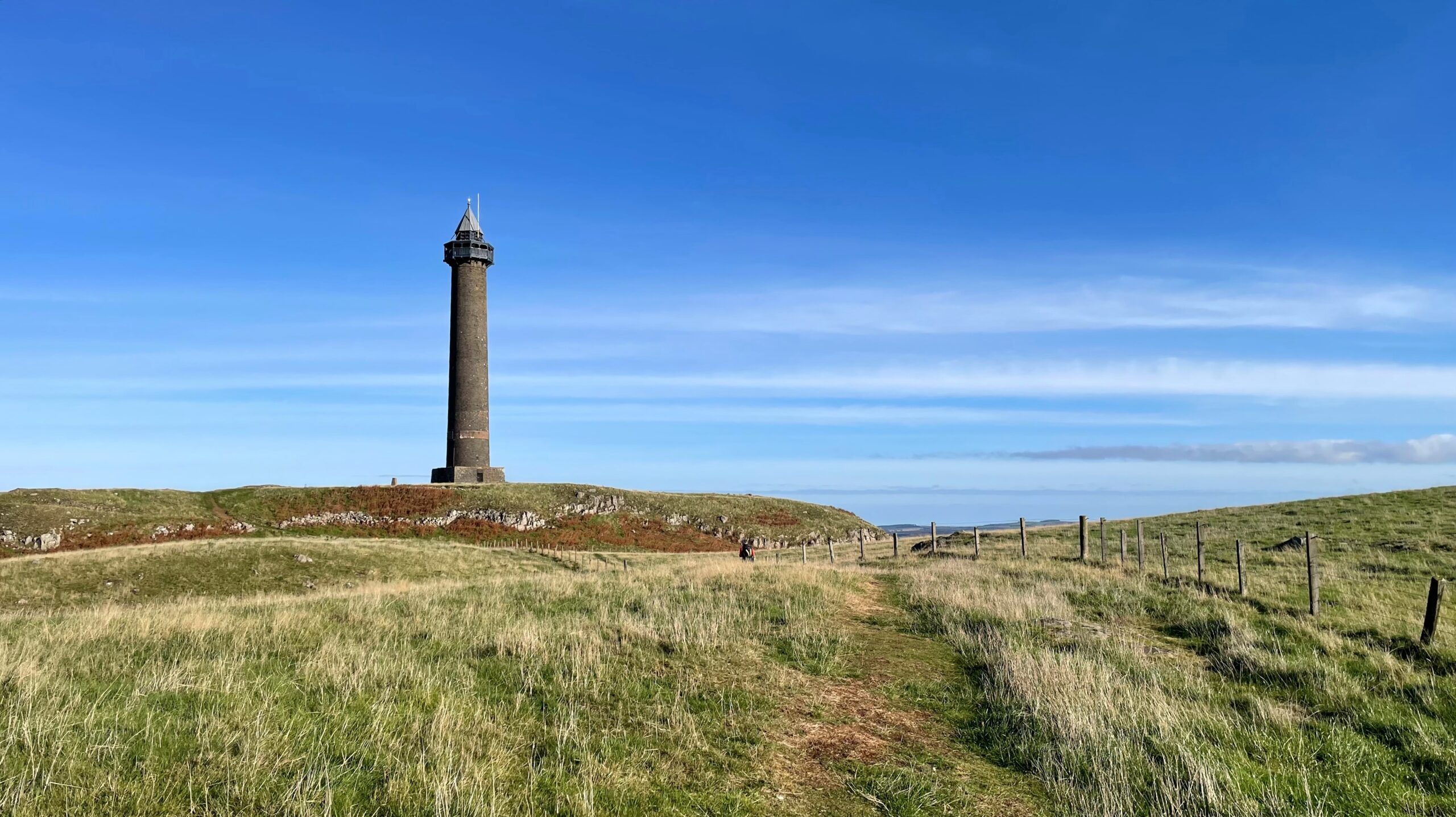Into the Scottish Borders, and to Peniel Heugh—a modest hill of 237 metres, though it carries itself as if it were Everest. It is, I am told, a volcanic plug of olivine microgabbro, which sounds far grander than the dark lump it appears to be above the village of Ancrum.
At its summit stands the Waterloo Monument, a 150-foot column of whinstone so extravagant it could only have been dreamt up by a Marquess1Glasgow Constitutional – 26 July 1851. Teviotdale—From Ruberslaw to the Jed. https://www.britishnewspaperarchive.co.uk/viewer/bl/0001229/18510726/036/0002. Built to immortalise Wellington’s victory, it bears the date 1835, which seems a touch tardy given that the battle itself was wrapped up in 1815. My confusion was short-lived; Wikipedia, ever the patient schoolmaster, revealed that the original tower had collapsed in an excess of enthusiasm, and this was the rebuilt version—courtesy of a different architect, presumably one with steadier hands.
- 1Glasgow Constitutional – 26 July 1851. Teviotdale—From Ruberslaw to the Jed. https://www.britishnewspaperarchive.co.uk/viewer/bl/0001229/18510726/036/0002

Leave a Reply